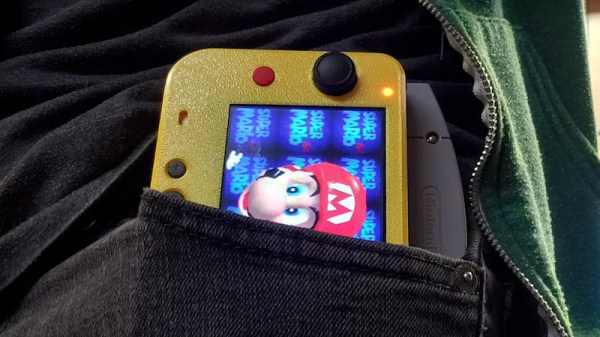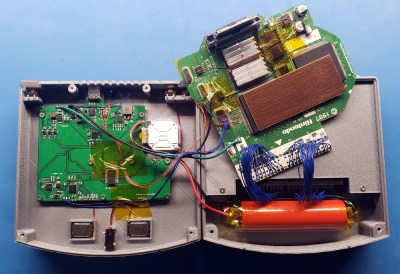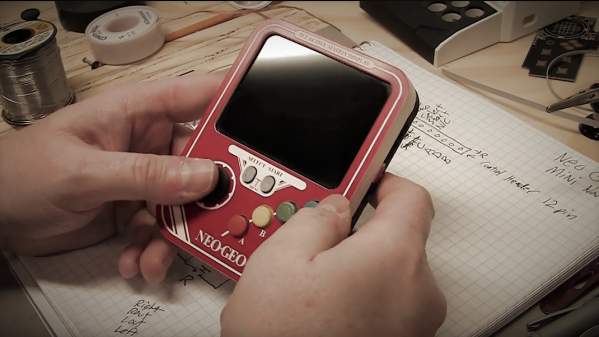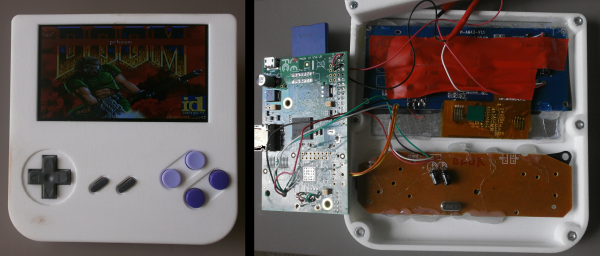Whilst recently perusing the fine wares for sale at the Vintage Computer Festival East, [Action Retro] ended up adopting a 1995 ProStar laptop. Unlike most laptops of the era, however, this one didn’t just have the typical trackpad and clicky mouse buttons, but also a D-pad and four suspiciously game controller looking buttons. This makes it rather like the 2002 Sony VAIO PCG-U subnotebook, or the 2018 GPD Win 2, except that inexplicably the manufacturer has opted to put these (serial-connected) game controls on the laptop’s palm rest.
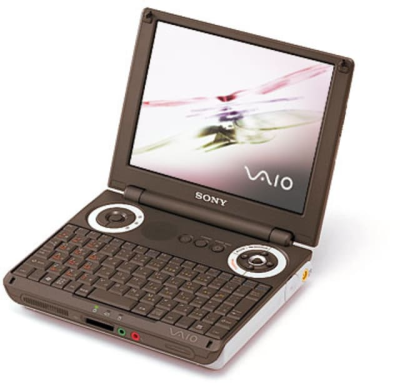
Though branded ProStar, this laptop was manufactured by Clevo, who to this day produces generic laptops that are rebranded by everyone & their dog. This particular laptop is your typical (120 MHz) Pentium-based unit, with two additional PCBs for the D-pad and buttons wired into the mainboard.
Unlike the sleek and elegant VAIO PCG-U and successors, this Clevo laptop is a veritable brick, as was typical for the era, which makes the ergonomics of the game controls truly questionable. Although the controls totally work, as demonstrated in the video, you won’t be holding the laptop, meaning that using the D-pad with your thumb is basically impossible unless you perch the laptop on a stand.
We’re not sure what the Clevo designers were thinking when they dreamed up this beauty, but it definitely makes this laptop stand out from the crowd. As would you, if you were using this as a portable gaming system back in the late 90s.
Our own [Adam Fabio] was at VCF East this year as well, and was impressed by an expansive exhibit dedicated to Windows 95.
Continue reading “The ProStar: The Portable Gaming System And Laptop From 1995”



